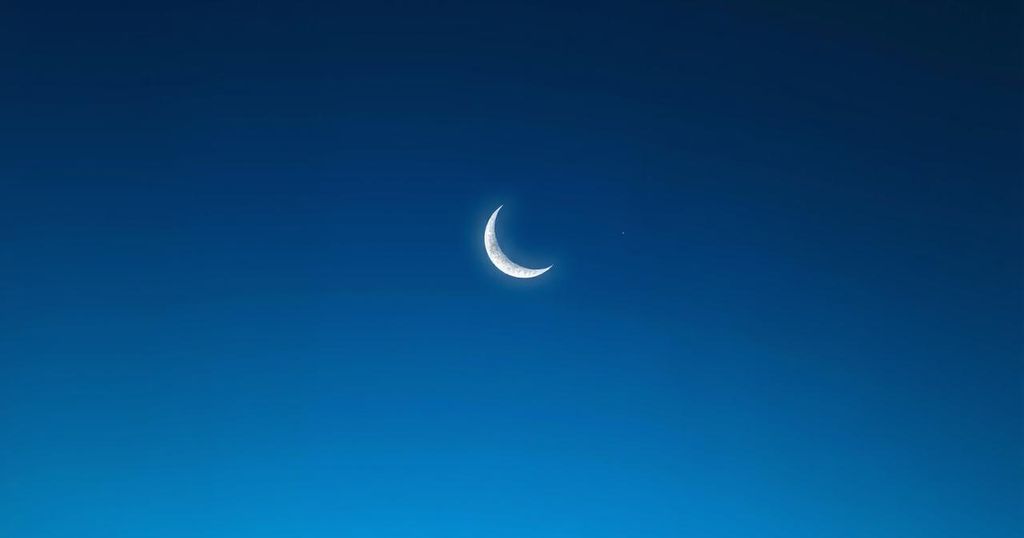Controversy Surrounds Eid ul Fitr 2025 Moonsighting in Saudi Arabia

Eid ul Fitr 2025 began in Saudi Arabia amid controversy over the crescent moon’s visibility. Despite predictions from astronomers that the moon could not be seen, officials announced it was sighted, prompting skepticism from some observers. The conflict illustrates ongoing debates about lunar sightings and their influence on Eid celebrations globally.
Eid ul Fitr 2025 has commenced in Saudi Arabia and several neighboring countries, including the United Arab Emirates and Qatar, despite astronomers claiming the crescent moon was not visible. The Saudi announcement regarding the Eid date was made shortly after 3 PM UK time on Saturday, March 29, effectively concluding Ramadan and welcoming the month of Shawwal, marked by festivities lasting three days.
The declaration came on the 29th day of Ramadan, a time when moonsighting is traditionally required. During this announcement, UK astronomers had predicted that visibility of the crescent moon would be unattainable across various regions due to the timing of the new moon’s occurrence. Specifically, the HM Almanac Office stated, “Sightings of the crescent moon are unlikely for most of the globe on Saturday, March 29th.” It remarked that clear observations would only be feasible from March 30 through April 1.
In contradiction to the astronomical predictions, officials from the Two Holy Mosques announced on social media that they had sighted the crescent moon, declaring that Eid ul Fitr would be observed on Sunday, March 30. While some local reporters suggested a slight possibility of sighting, they noted that conditions were challenging, with observers indicating a very short time window for potential sightings.
Numerous astronomical observatories across Saudi Arabia worked diligently to capture images of the crescent. Abdullah Al-Khudairi, one of the moonsighting observers, remarked, “The disagreement over the possibility of sighting the Shawwal crescent today is not among academic experts, but rather among amateur observers. The skies are perfectly clear for sighting the Shawwal crescent.”
However, skepticism arose among the public regarding the official sighting. Some individuals criticized the authenticity of the reported sighting and demanded evidence, including timestamped photographs, to support the claims. The New Crescent Society, a UK moonsighting organization, emphasized that such a sighting conflicted with scientific forecasting. Dr. Zahid Nawaz, a Midlands-based moonsighting expert, further reiterated that multiple conditions would render the crescent moon invisible on that day.
Despite differing views and divisions among the observers, some members of the UK Muslim community adhere to Saudi announcements for Eid celebrations. For instance, the Green Lane Masjid in Birmingham has organized large-scale public Eid festivities set to occur on March 30 in Small Heath Park.
In summary, the announcement of Eid ul Fitr 2025 in Saudi Arabia has sparked significant debate regarding the visibility of the crescent moon, with officials declaring a sighting despite astronomical predictions to the contrary. The contrasting opinions among professional astronomers and local observers reflect a broader discourse on lunar sighting practices. Communities worldwide continue to grapple with the implications of these declarations on their Eid celebrations, highlighting the ongoing tensions between traditional customs and scientific observation.
Original Source: www.birminghammail.co.uk







